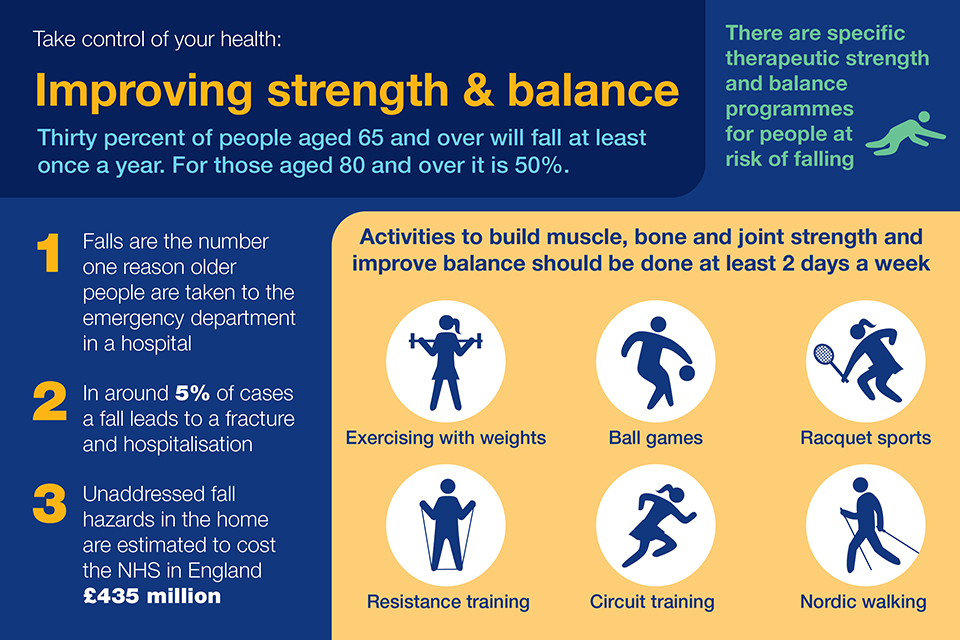Some Known Details About Dementia Fall Risk
Table of ContentsDementia Fall Risk for DummiesAll about Dementia Fall RiskOur Dementia Fall Risk StatementsDementia Fall Risk Can Be Fun For Everyone
A loss threat assessment checks to see exactly how likely it is that you will drop. The evaluation typically includes: This consists of a collection of inquiries concerning your total health and if you've had previous falls or issues with equilibrium, standing, and/or walking.STEADI consists of screening, evaluating, and treatment. Interventions are referrals that might decrease your threat of falling. STEADI includes 3 steps: you for your danger of dropping for your danger aspects that can be enhanced to attempt to stop drops (for instance, balance problems, damaged vision) to reduce your threat of falling by making use of effective techniques (as an example, supplying education and resources), you may be asked numerous inquiries consisting of: Have you dropped in the past year? Do you really feel unsteady when standing or strolling? Are you fretted regarding falling?, your provider will certainly test your stamina, balance, and gait, utilizing the adhering to fall assessment tools: This test checks your stride.
After that you'll take a seat once again. Your service provider will certainly inspect for how long it takes you to do this. If it takes you 12 secs or even more, it might imply you are at higher danger for a loss. This examination checks strength and balance. You'll being in a chair with your arms went across over your breast.
The settings will obtain tougher as you go. Stand with your feet side-by-side. Move one foot midway onward, so the instep is touching the large toe of your various other foot. Move one foot completely before the other, so the toes are touching the heel of your various other foot.
About Dementia Fall Risk
The majority of drops take place as a result of multiple adding aspects; consequently, taking care of the threat of dropping starts with identifying the factors that add to fall threat - Dementia Fall Risk. A few of one of the most appropriate danger variables include: History of previous fallsChronic clinical conditionsAcute illnessImpaired stride and equilibrium, lower extremity weaknessCognitive impairmentChanges in visionCertain high-risk drugs and polypharmacyEnvironmental variables can likewise increase the danger for falls, including: Insufficient lightingUneven or harmed flooringWet or unsafe floorsMissing or damaged handrails and grab barsDamaged or poorly fitted tools, such as beds, wheelchairs, or walkersImproper use assistive devicesInadequate supervision of the individuals living in the NF, including those who display aggressive behaviorsA effective autumn danger administration program calls for a complete scientific analysis, with input from all members of the interdisciplinary team

The care plan must additionally consist of treatments that are system-based, such as those that advertise a secure atmosphere (appropriate lights, handrails, order bars, etc). The effectiveness of the treatments ought to be evaluated occasionally, and the treatment plan modified as necessary to mirror changes in the autumn threat analysis. Carrying out a loss risk administration system utilizing evidence-based ideal technique can minimize the frequency of drops in the NF, while restricting the capacity for fall-related injuries.
The Greatest Guide To Dementia Fall Risk
The AGS/BGS standard suggests screening all grownups aged 65 years and older for fall danger annually. This testing is composed of asking clients whether they have actually dropped 2 or even more times in the previous year or sought medical focus for an autumn, or, if they have not dropped, whether they really feel unsteady when strolling.
Individuals that have fallen as soon as without injury must have their equilibrium and stride reviewed; those with stride or equilibrium problems ought to receive extra assessment. A history of 1 loss without injury and without gait or equilibrium problems does not call for more assessment past continued annual fall danger testing. Dementia Fall Risk. An autumn threat assessment is required as component of the Welcome to Medicare examination

The Only Guide for Dementia Fall Risk
Recording a drops background is among the high quality signs for loss avoidance and monitoring. An important part of risk evaluation is a medicine review. Numerous classes of medicines boost loss threat (Table 2). copyright medicines specifically are independent predictors of drops. These drugs tend to be sedating, change the sensorium, and harm balance and gait.
Postural hypotension can typically be minimized by decreasing the dose of blood pressurelowering drugs and/or stopping drugs that have orthostatic hypotension as a side impact. Usage of above-the-knee assistance hose and sleeping with the head of the bed boosted might additionally minimize postural reductions in high blood pressure. The advisable components of a fall-focused physical assessment are displayed in Box 1.

A yank time higher than or equivalent to 12 seconds recommends high loss risk. The 30-Second Chair Stand examination evaluates reduced extremity strength and balance. Being incapable official website to stand from a chair of knee height without making use of one's arms suggests boosted loss risk. The 4-Stage Balance examination evaluates static balance by having the person stand in 4 settings, each progressively more tough.
Comments on “Dementia Fall Risk Can Be Fun For Everyone”